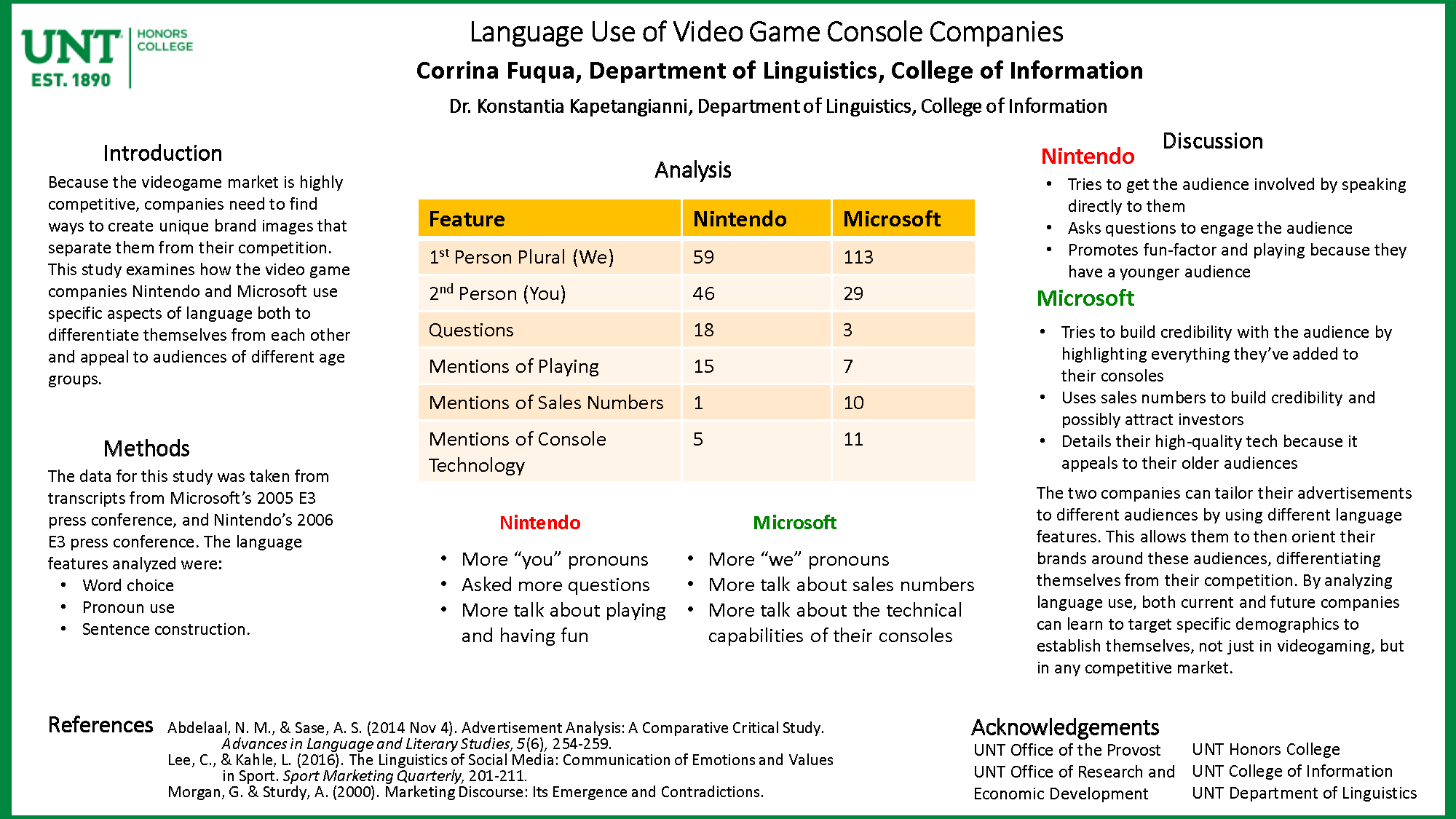First Name:
CorrinaLast Name:
FuquaMentor:
Dr. Konstantia KapetangianniAbstract:
This study aims to analyze the functions of different language features used by the two video game companies Nintendo and Microsoft in their advertisements for different video game consoles. It focuses on how the two companies use specific word choices, pronouns, and sentence constructions to create a unique identity within a competitive market. This study takes inspiration from three sources. The qualitative analysis of this study is based on Abdelaal and Sase’s (2014) analysis of women’s beauty products from different companies. Its qualitative aspect is based on Lee and Kahle’s (2016) report of the linguistic content of tweets from different Major League Baseball teams and sports apparel companies. It will also look at cross-cultural comparisons, such as in Zhang’s (2001) analysis and comparison of Chinese and American commercials. This study collects data from transcriptions of four video game console presentations given by Nintendo and Microsoft. The transcriptions were analyzed in order to describe each language feature’s function. The number of instances each function appeared in the presentations was then compared between the companies. Nintendo used language focused more toward family and collaboration, while Microsoft used language focused on competition and the technical aspects of their consoles. Additionally, Nintendo used more second person pronouns to engage with their audience and encourage participation, while Microsoft used more first person pronouns to build credibility with their audience. These analyses both fall in line with the companies’ general brand image, as Nintendo is marketed more toward children while Microsoft tends to target older audiences. This research adds to the literature of Marketing Discourse and provides insight into how companies in a competitive market can use language to appeal to different audiences.
Poster:





